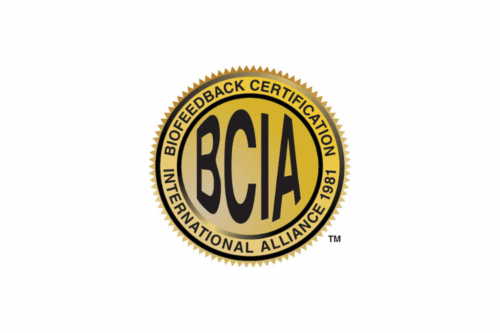Job fairs need no introduction in terms of their usefulness, desirability, and time-honored place in the professional world. However, knowing that job fairs are good and knowing how to host a job fair are two very different propositions.
The good news is, hosting a successful job fair that turns heads, drives dues, and earns you community standing is easier than you might think. Let’s take a look at the 10 main steps to get there.
What is a job fair and what are its benefits?
First and foremost, what is a job fair?
In a nutshell, job fairs or hiring events are gatherings of employers and prospective employees. The former are looking for great candidates, while the latter are looking for anything from their first job to a major career change.
Job fairs are a great way to sell memberships, because you can give discounts or free tickets to high-level hiring events where members can meet important employers and hiring managers they wouldn’t get facetime with elsewhere.
Job fairs are only one of many ways to offer professional perks to your members (others include job boards or speaker events, for instance). They also only happen once a year. It may be surprising, therefore, to learn that when you figure out how to host a job fair, you’ll see massive benefits all year long.
Benefits for attendees
It’s pretty obvious what attendees get out of job fairs: access to employers, networking potential, interviews, feedback, and more.
The real question is, what do you get out of it?
Benefits for nonprofit organizations and employers
As a professional organization, you don’t have very high stakes in whether a specific person gets a specific job. What you do care about is how your job fair makes you look to the community as a whole, and in that sense, it has major brand potential. Benefits include:
- Building brand recognition in your community
- Raising money through booth fees and sponsorship
- Creating awareness of your mission and organization
- Recruiting sponsors for events or programs
- Cultivating donors among the attending employers
- Acquiring new donors or members among attending employees
What nonprofit organization doesn’t want to enjoy such benefits? Now the question becomes, how can you get them for yourself? That’s where the following practical steps come in.
10 practical steps
The best way to approach the question of how to host a job fair is to break it down into smaller, more manageable chunks. Otherwise you risk analysis paralysis as you try to figure out how to approach a massive event.
Instead of losing sleep, take the following 10-step approach.
1. Identify what type of job fair you would like to do
While “job fair” seems like an all-encompassing term, there are actually several types of job fairs:
- Specific employer fairs: Some job fairs are hosted by a single employer. While this is a great approach if your organization or a partner company has a lot of roles to fill, you should only jump on board if there are plenty of openings to draw a crowd.
- College career fairs: Graduating students are among the biggest sectors of employment-hungry individuals in America and around the world. Hosting fairs geared toward students or graduating students is a great way to bring in professional memberships, because by that time the attendees mostly know what they want to do. For the nonprofit, this is great. For the students, it may not always be as beneficial, because a lot of the employers are there to scope the new crop rather than actively hire.
- Public job fairs: The most common type of job fair is available to the public in general. Employers may represent a single industry, a niche profession, or your nonprofit’s mission.
2. Determine the goals of the event and what you would like to accomplish
When learning how to host a job fair, it might seem intuitive to throw together a venue and some canapés and go for it. However, remember your goals.
The main goal in choosing your job fair type is to determine how exactly the fair can help your nonprofit. While partnering with companies is great, if you can’t bring in memberships or donors, it’s a waste of your resources. Therefore, before you talk to sponsors, employers, or caterers, ask yourself questions such as:
- How will this fair engage members?
- What exact numbers are you trying to hit, in terms of income, signups, and donations?
- How many sponsors do you need?
- How many employers?
- How many attendees are you hoping to get?
- What is your event communication plan, and how will it add to your goals?
Answering these questions will help you take the next eight steps.
3. Decide on a date and time for the event or activity
It might seem intuitive to ask your employers and sponsors about their preferred date and time, but too many cooks in the kitchen just cause problems. Instead, consider the most appropriate date and time for your attendees. When will they be available? When will they want to come? How long will your event be, and how does that impact when it should happen?
4. Consider locations and types of facilities to host your event
Next up in learning how to host a job fair: locations and facilities. This is highly dependent on your predicted audience, so it can be helpful to conduct surveys about who might attend your event. You can do this through email or your website.
A good way to save money is to choose facilities that have as many of the amenities you need already on site. For instance, if you are hosting a culinary job fair, then kitchens are a must. On the other hand, if your industry is geared toward housing or manufacturing, this isn’t necessary.
Also consider amenities such as:
- Microphones and speakers
- Conference rooms
- Classrooms
- Loading docks
- Open floor space
5. Consider people to assist with the execution of the event
There are several groups of people to consider for assisting with your event. These include your staff, your volunteers, corporate partners, in-kind donors, and event experts.
6. Determine expenses and responsibilities
How well your event comes off depends on how well you marshal your resources. Once you decide what form your event will take, refine your initial budget – which will have informed your choice of venue, etc. – to include every line-item expense. This should be very granular, including everything from flowers to event description copywriting to your communication plan and beyond.
7. Create an event timeline
Job fairs are rather free-for-all in their timelines, because the main goal is to give employers are potential employees lots of time to mingle and exchange information. However, you will need to choose some hard-and-fast times, including:
- The start and end times
- Important speakers
- Morning and lunch breaks
- Dinners and galas
Don’t forget to make this very clear on your website, as well as registration deadlines. Using an event registration app will help with this.
8. Determine key decisions
One mistake many make when learning how to host a job fair is failing to delegate. Make sure that in addition to conscripting folks to help (as in Step 5), you also decide on the key decision-makers and what spheres they will control.
In larger organizations, this may naturally break along department lines. In smaller organizations, where people wear many hats, you will have to pinpoint who does what ahead of time.
9. Take into consideration special additions/items if needed
Your event may require special considerations, depending on your audience. If your job fair is geared toward a specific industry or mission, for example, then you may need experts in that field to help draw people in. Dietary restrictions may apply to a culinary fair, while enclosures may be necessary for animal-oriented organizations.
10. Follow up
It’s not enough simply to market your job fair and hope for the best. If you get positive responses from people, make sure to follow up and get them to buy tickets. Those who do buy should receive detailed post-registration emails.
For those who give you no response, feel free to send another email or two letting them know about your fair. It’s possible they just didn’t catch the email at that time but are interested.
How to host a job fair with MemberClicks
Whatever else you do, make sure to designate a central online hub where people can find information, sign up for your fair, and build community both before and after the event. MemberClicks can help you do just that, so get in touch to learn more today.
















